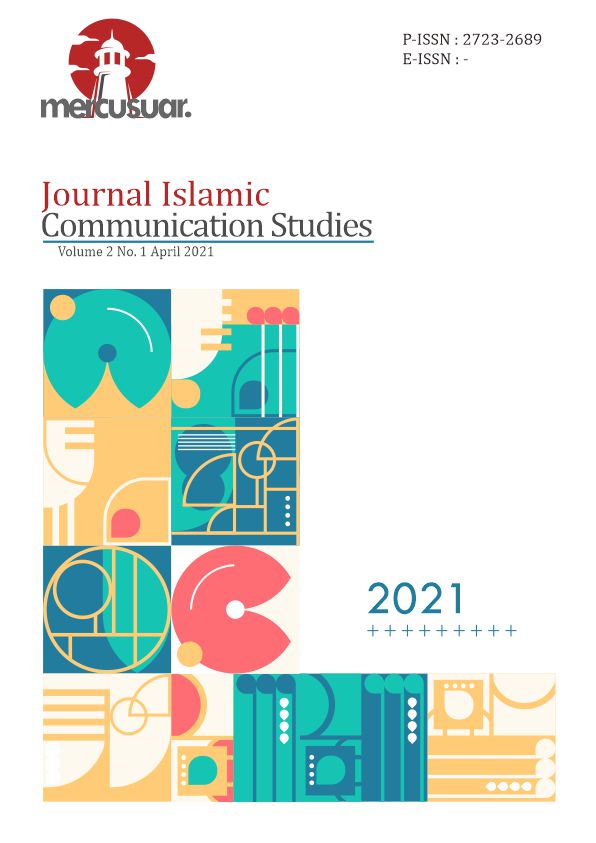The influence of Indonesian Sign Language (BISINDO) news broadcasts on the audience's understanding of information on television
Abstract
The rapid development of technology today has a significant impact on the flow of information to all levels of society, including people with disabilities, especially the deaf. Deaf people are always identified as unable to hear (deaf) and unable to speak (mute). In Indonesia, there are two legally recognized sign languages, namely Indonesian Sign Language System (SIBI) and Indonesian Sign Language (BISINDO). The fundamental difference between the two sign languages is that SIBI uses one hand while BISINDO uses two hands. However, the research only examines BISINDO because this sign language is more popular among deaf people. The deaf community of the Indonesian Movement for Deaf Welfare (GERKATIN) in Gowa Regency is the object of this study. The results of this study indicate that the influence of BISINDO news broadcasts on the understanding of the GERKATIN deaf community in Gowa Regency has a coefficient value of Y = 8.053 + 0.363 X. The constant number is 8.053 and the variable coefficient is 0.363, while the calculated t-value is 4.210, which is larger than the t-table of 1.674 with a significance level of 0.000 smaller than α = 0.05. Based on the statistical calculations obtained, the hypothesis in this study is that there is an influence between the two variables, which means that H0 is rejected and Ha is accepted. Meanwhile, the magnitude of the influence shows that the value of R is 0.501a and the coefficient of determination (Rsquare) obtained is 0.251 or 25.1%. This number indicates an influence of 25.1% on the variable and falls into the low category. The remaining 74.9% is influenced by other variables.
Downloads
References
Bungin, Burhan. Metodologi Penelitian
Kuantitatif. VII. Jakarta: Kencana,
Hasrullah. Beragam Perspektif Ilmu
Komunikasi. 1st ed. Jakarta: Kencana
Perdana Media Group, 2013.
Herawati, Erni. “Komunikasi Dalam Era
Teknologi Komunikasi Informasi.”
Binus Journal Publishing 2, no.
Humaniora (2011).
https://doi.org/https://doi.org/10.21
/humaniora.v2i1.2955.
Khalik, Abdul. Komunikasi Massa.
Makassar: Alauddin University Press,
Kominfo, PPID. “Undang-Undang Republik
Indonesia Nomor 32 Tahun 2002
Tentang Penyiaran.” KOMINFO, 2002.
https://ppidkemkominfo.files.wordpr
ess.com/2012/11/uu-no-32-tahun 2002-tentang- penyiaran.pdf.
Kusnandar, Viva Budy. “Hanya 13%
Masyarakat Yang Masih
Mendengarkan Radio.” Databoks,
https://databoks.katadata.co.id/data
publish/2019/10/23/hanya-13-
persen-masyarakat-yang-masihmendengarkanradio#:~:
text=Berdasarkan hasil
survei indikator sosial,13%2C31%25
pada 2018.
Kustiani, Rini. “Berapa Banyak
Penyandang Disabilitas Di Indonesia?
Simak Data Ini,” 2019.
https://difabel.tempo.co/read/12668
/berapa-banyak-penyandangdisabilitas-
di-indonesia-simak-dataini.
Nuswantoro, Aloysius Ranggabumi.
“Konservasi Media : Memori Kultural
Pada Media- Media Lama.” Ilmu
Komunikasi 11, no. Ilmu Komun.
(2014).
https://doi.org/https://doi.org/10.24
/jik.v11i2.412.
Risky Rahma Yunitasari, Skripsi. “Pengaruh
Terpaan Tayangan Translasi Bahasa
Isyarat Oleh ‘Sign of Language
Interpreter’ (SLI) Di Televisi Terhadap
Pemahaman Audience (Studi Pada
Komunitas Akar Tuli Malang).”
Universitas Muhammadiyah Malang,
Siregar, Syofian. Statistik Parametrik
Untuk Penelitian Kuantitatif. V.
Jakarta: Bumi Aksara, 2017.
Zuhir, Jannata. “Penggunaan Bahasa
Isyarat Indonesia (BISINDO) Pada
Siaran Berita Dalam Pemenuhan
Kebutuhan Informasi Penyandang
Tunarungu Di Kota Banda Aceh.”
Ilmiah Mahasiswa FISIP Unsyiah 4
(2019).
file:///Users/iqbalyusuf/Downloads%
A/11833-25156-1-PB.pdf.


